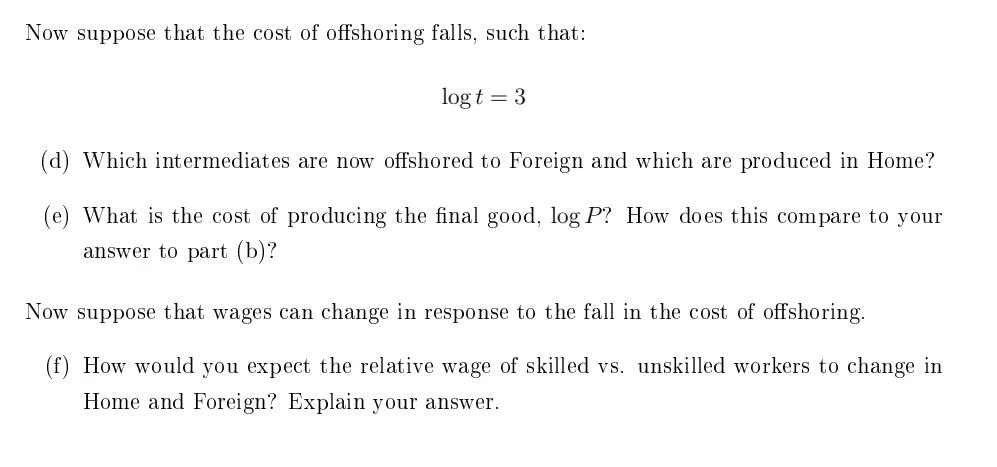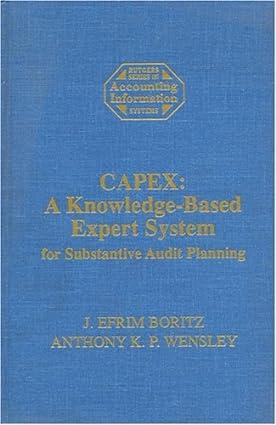Please help me solve all the questions. I will thumb you up and thanks so much!


Offshoring Consider the model of offshoring studied in class. There are two countries, Home and Foreign. There is a single final good that is produced in Home by assembling a continuum of intermediate inputs indexed by a[0,1]. The total cost of producing the final good is: logP=01logp(a)da where p(a) is the cost of intermediate good a. Each intermediate is produced under a market structure of perfect competition using the following production technology: x(a)=[1aL(a)]1a[aH(a)]a where x(a),L(a), and H(a) denote output, unskilled labor input, and skilled labor input for intermediate a respectively. Note that the index of the good is equal to its skill intensity, a. Each intermediate can also be produced either domestically in Home or offshored to Foreign. The production technology for producing each intermediate is the same in both countries. However, offshoring an intermediate to Foreign incurs an additional unit cost of t>1. In what follows, assume that wages are fixed at the following values: logwHlogrH=6,=10,logwFlogrF=1=9 where wc and rc denote the wage of unskilled and skilled labor respectively in country c{H,F}. Also, assume that the offshoring cost is given by: logt=4 Now suppose that the cost of offshoring falls, such that: logt=3 (d) Which intermediates are now offshored to Foreign and which are produced in Home? (e) What is the cost of producing the final good, logP ? How does this compare to your answer to part (b)? Now suppose that wages can change in response to the fall in the cost of offshoring. (f) How would you expect the relative wage of skilled vs. unskilled workers to change in Home and Foreign? Explain your answer. Offshoring Consider the model of offshoring studied in class. There are two countries, Home and Foreign. There is a single final good that is produced in Home by assembling a continuum of intermediate inputs indexed by a[0,1]. The total cost of producing the final good is: logP=01logp(a)da where p(a) is the cost of intermediate good a. Each intermediate is produced under a market structure of perfect competition using the following production technology: x(a)=[1aL(a)]1a[aH(a)]a where x(a),L(a), and H(a) denote output, unskilled labor input, and skilled labor input for intermediate a respectively. Note that the index of the good is equal to its skill intensity, a. Each intermediate can also be produced either domestically in Home or offshored to Foreign. The production technology for producing each intermediate is the same in both countries. However, offshoring an intermediate to Foreign incurs an additional unit cost of t>1. In what follows, assume that wages are fixed at the following values: logwHlogrH=6,=10,logwFlogrF=1=9 where wc and rc denote the wage of unskilled and skilled labor respectively in country c{H,F}. Also, assume that the offshoring cost is given by: logt=4 Now suppose that the cost of offshoring falls, such that: logt=3 (d) Which intermediates are now offshored to Foreign and which are produced in Home? (e) What is the cost of producing the final good, logP ? How does this compare to your answer to part (b)? Now suppose that wages can change in response to the fall in the cost of offshoring. (f) How would you expect the relative wage of skilled vs. unskilled workers to change in Home and Foreign? Explain your








